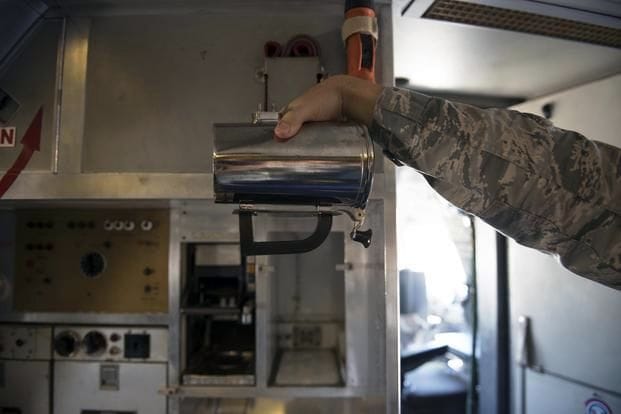
An amusing story on Military.com got me thinking about how industry uses – or doesn’t use 3D printing.
The gist of the military story is interesting, and I assume perhaps infuriating to US taxpayers, as it involves USD$1,200 coffee cups.
Apparently the US Air Force spent some USD$56,000 in three years to replace cups used to reheat hot beverages on long-distance air refueling tankers. These cups are said to be quite fragile and the handles break easily when dropped. I can imagine that happening more often than you’d expect on a moving airplane.
Unfortunately – or perhaps planned – replacement handles are not available from the vendor, and thus entirely new cups must be purchased at exorbitant cost. The replacement cost for 25 cups in 2018 was an incredible USD$32,000!
The folks breaking these cups decided that they could save some cash by 3D printing replacement handles that were more robustly designed than the original. And they did so successfully after only a week of casual prototyping, with a replacement handle cost of only USD$0.40 each, about the cost of the plastic required.
This is a good story; 3D printing saves the day with lower costs and short circuits an outrageous pricing situation.
However, this got me thinking. 3D printing has made strides in certain industries, but not yet others.
The reason for the success of 3D printing is that some type of function is able to be produced that provides value for the application.
In the case of aerospace, 3D printed parts can be far lighter yet still offer the same strengths, for example.
But there’s a catch: 3D printing takes a long time and often costs much more than conventional manufacturing, so this isn’t an option for most applications.
However, in the case of aerospace – and medical and automotive – the current cost of parts is already quite high, leaving plenty of financial room for 3D printed part options to enter. Swap a better expensive 3D printed part in for an existing expensive part can work.
That’s why 3D printing doesn’t often work in other industries where part costs are low. 3D printing just can’t compete, particularly when there is little functional difference between the new and old parts.
So really you need an industry with high-priced parts to consider significant use of 3D printing technologies. Now, which industries can that be, beyond aerospace, medical and automotive?
How about one that uses USD$1,200 coffee cups?
We’ve all heard stories about how the military tends to use ridiculously high priced common items, so I’m wondering if 3D printing could put a dent in that practice.
While technically this may be possible, I think it may not happen because most of the high pricing is due to the process of equipment acquisition. The military makes vendors jump through many hoops to enable them to sell their products, and they will wish to charge appropriately – or higher, to do so.
As in this particular case, the military is likely limited to making informal spare parts for equipment as required. Any significant parts require design expertise and more than likely access to existing CAD designs held close by the supplier.
But it’s nice to think about how money could be saved.
Via Military.com

